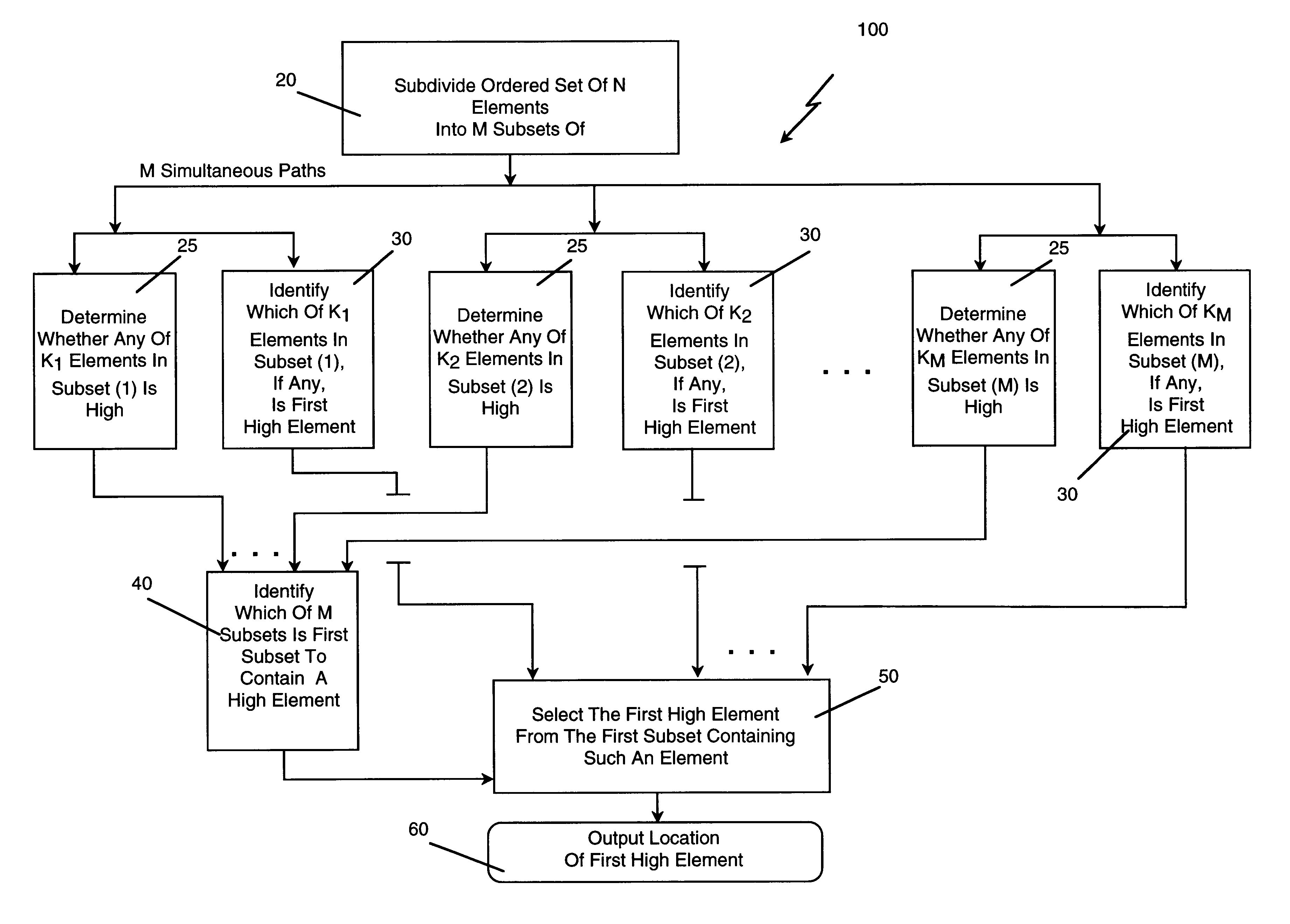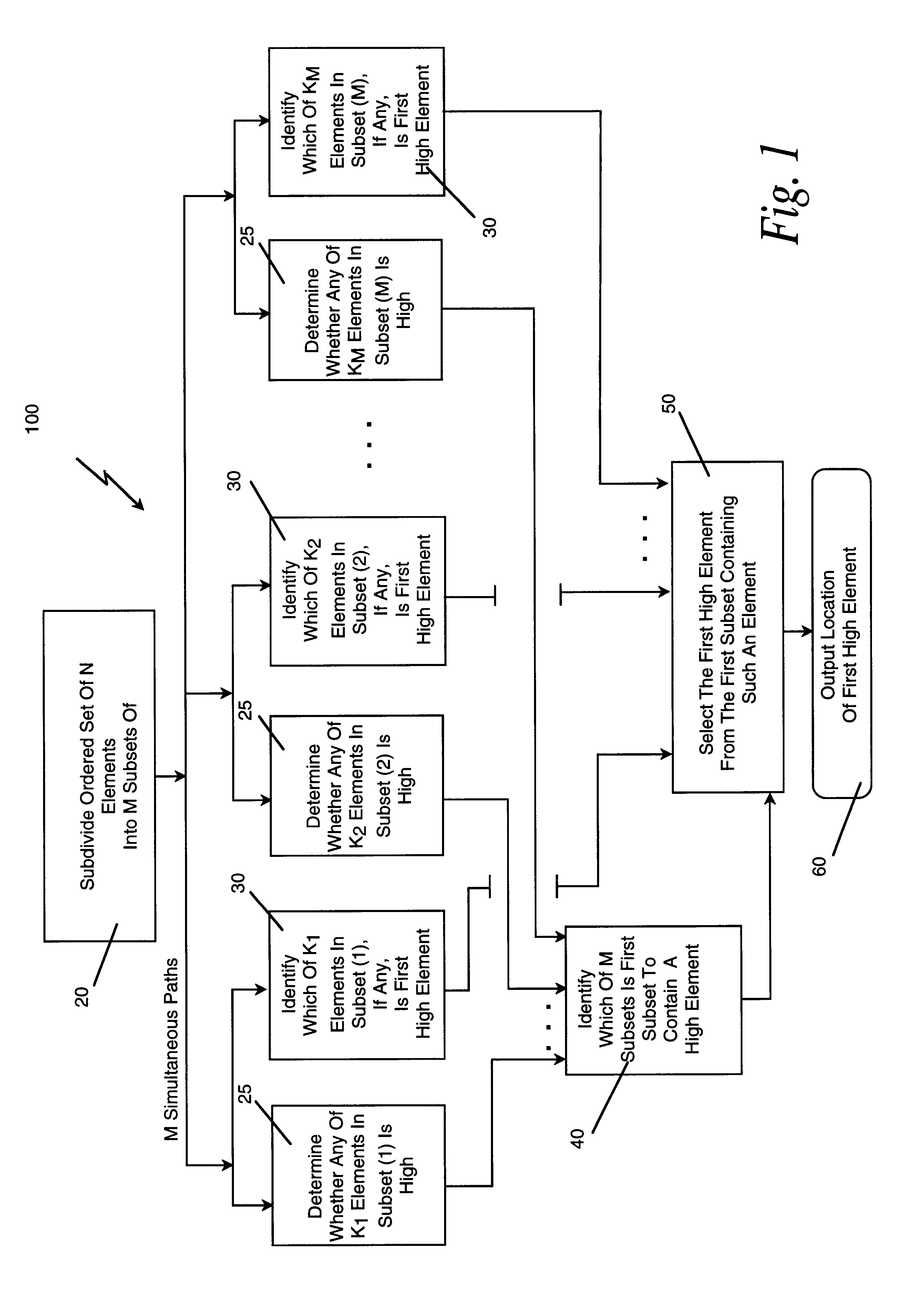Method and apparatus for finding a first element
a technology of element and method, applied in the field of method and apparatus for finding element, can solve the problem of prohibitively long execution time and achieve the effect of simplifying the problem
- Summary
- Abstract
- Description
- Claims
- Application Information
AI Technical Summary
Benefits of technology
Problems solved by technology
Method used
Image
Examples
Embodiment Construction
FIG. 1 is a flowchart of a method 100 according to the invention. The goal of the method 100 is to determine which element of an ordered set of N elements is the first element meeting a predetermined condition. The variable N represents the number of elements in the ordered set of data that is being processed by the method 100. The method 100 begins by subdividing (20) the ordered set of N elements into M subsets having K.sub.1, K.sub.2, . . . , K.sub.M respective elements each. The variable M represents the number of subsets that the ordered set of N elements is divided into. The variables K.sub.1, K.sub.2, . . . , K.sub.M represent the number of data elements in each respective subset. Preferably, K.sub.1 =K.sub.2 = . . . =K.sub.M =K=N / M. The method 100 then proceeds along M parallel and simultaneous paths. In each of the M simultaneous paths (say the i-th path), two operations are undertaken in parallel. One operation involves determining (25) whether any of the K.sub.i elements ...
PUM
 Login to View More
Login to View More Abstract
Description
Claims
Application Information
 Login to View More
Login to View More - R&D
- Intellectual Property
- Life Sciences
- Materials
- Tech Scout
- Unparalleled Data Quality
- Higher Quality Content
- 60% Fewer Hallucinations
Browse by: Latest US Patents, China's latest patents, Technical Efficacy Thesaurus, Application Domain, Technology Topic, Popular Technical Reports.
© 2025 PatSnap. All rights reserved.Legal|Privacy policy|Modern Slavery Act Transparency Statement|Sitemap|About US| Contact US: help@patsnap.com



